Recollections of the Past 30 years pursuing Coelacanths
Jerome Hamlin, creator dinofish.com
Not until 2015 did we get off another SoPac: SoPac V. This time the specific focus was the large island of Bougainville. Bougainville was between the Solomons and Papua New Guinea, although technically a part of Papua New Guinea. (At this time it was designated a semi autonomous political entity. ) The reason I was interested was that on my first trip to the Solomons in 2007, I was told that coelacanths had been sold at the fish market on the south end of the island!
It was possible to cross over to Bougainville from the Solomons by boat, just as fishermen often did, a ride of about 40 minutes. But for various reasons, we decided to come down the island from the top via Papua New Guinea. So off we went again to New Guinea, all the way from NYC, the long Pacific crossing broken again by a stop in Tahiti, but then on direct to Port Morseby via Honiara. From Port Morseby we flew direct to Rabaul, and there stopped again at the Rabaul Hotel, to enjoy the good food and see the owners. The plan was for a single overnight in Rabaul before catching an ongoing flight to Buka, a small island at the tip of Bougainville with the main airstrip and seperated from the main island by a narrow straight. But while we were in Rabaul, word came that there were no accomodations in Buka due to an impending referendum on Bougainville's political status. The owners of the Rabaul Hotel were in direct contact with their "man in Buka." So faced with this delay we resumed our exploration of Rabaul and in the process learned of an exciting possubility. The Baining fire Dancers in the nearby mountains would do a performance for us, although it was out of season, if we would put up some New Guinea dollars, half in advance.
We had missed this dance before, although I was aware that sometimes they came down and actually performed in filelds for cruise ship passengers. But I knew that for us this would be a once in a lifetime opportunity, so I boarded a rickty mini van that appeared at the hotel with Remisio who became our "fixer" to get into Kokopo and began visiting the ATM. After I had pulled enough daily allowances for a down payment, we visited the village where the dancers lived. I said I we would like to see the dance there in the clearing, not on a football field by the port. We did not actually see the dancers who were simply local farmers at this time, but rather the chiefs who were in charge of these matters. We were shown the masks that they would use and were told we could purchase them after as they are only used once. When all was settled, the night of the dance was established, rain permitting, and we returned to Rabaul.
I invited staff from the hotel, locals who had never seen the fire dance, and although they showed interest, nobody appeared for the ride up. All afternoon, we watched ominous rain clouds skirting the area, but at night they cleared. We were on our way back to the mountains in the rickety minivan. At the village they had a rather small fire going in the middle of the field. I was somewhat disappointed. I had my Canon 5D Mark III and a flash unit for it. I also set up my Samsung Note4 smart phone on a tripod to record video continuously as I snapped pictures. And I ran a digital audio recorder for pure audio. Diana had her Nikon. I did not realize at first what a challenge the photography would be.
As the sky darkened, they fed the fire in the center of the clearing, which grew larger. A small goup of muscians appeared. And then the dancers, which I will leave to the pictures to describe. They were already hopped up on something, and at the end of the dance were in no ways ready to stop as we were dragged away by our fixer/guide Remisio.
The difficulty of photography was using autofocus,which required a stong contrast between light and dark areas to fix a focus. I found I had to burst shoot to be sure of getting anything sharp, as the dancers moved quickly from shadows to in front of the fire at which instant the focus would cut in. They would kick the fire causing thousands of sparks to rise into the air around and above them. It certainly was one of the most spectacular indigenous performances I have ever seen, and the pictures I did get are among the best I have ever taken. The dancers themselves were so agitated that they knocked over the tripod with the video being recorded, but nonetheless I got a good video record of the performance. (I learned from the organizer that director James Cameron had been there previously and filmmed them as part of his deep dive into a neighboring trench in preparation for his Marianas descent. He was later informed of our visit by a mutual aquaintance, and that I bemoaned his causing the price to be jacked up!)
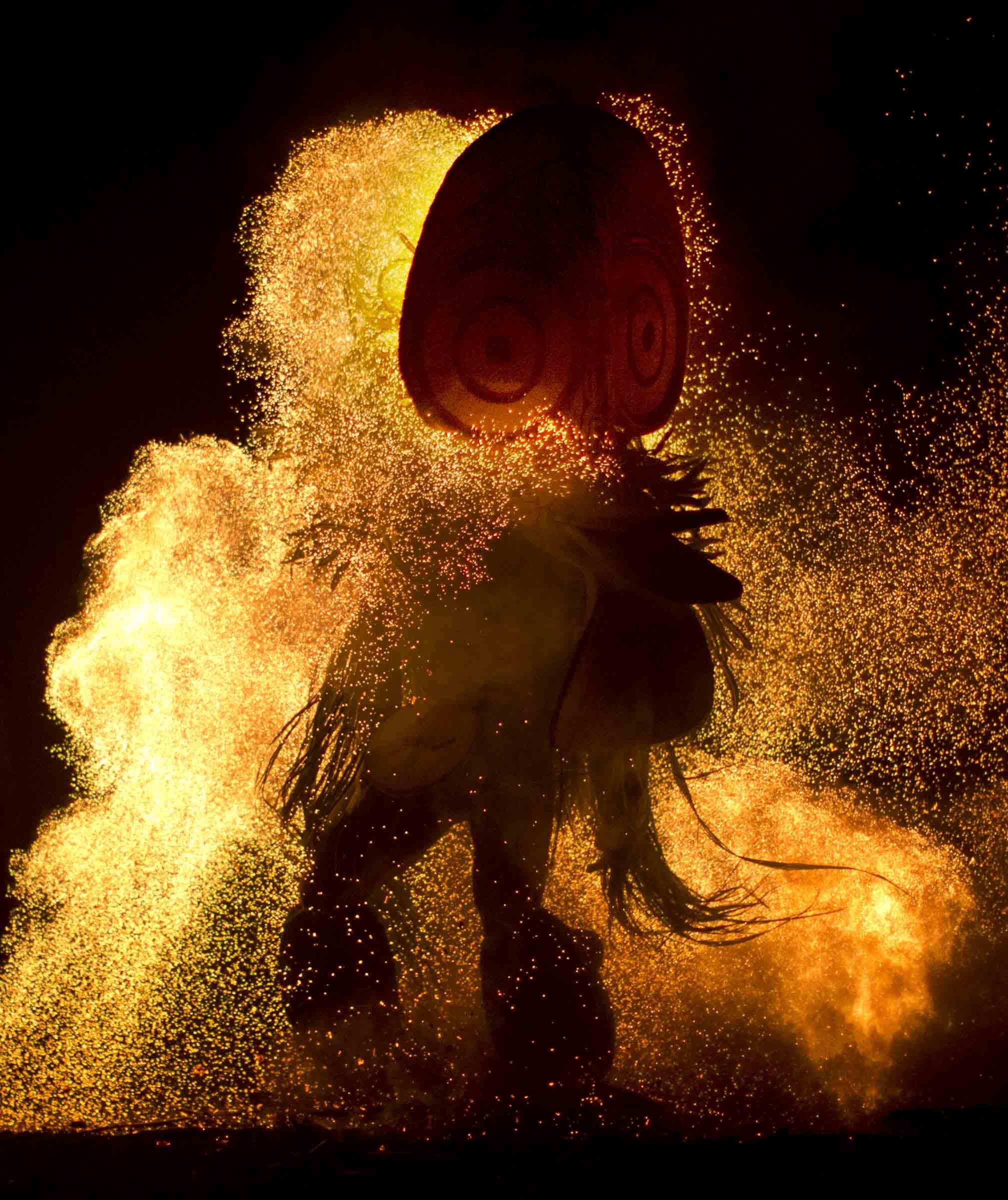
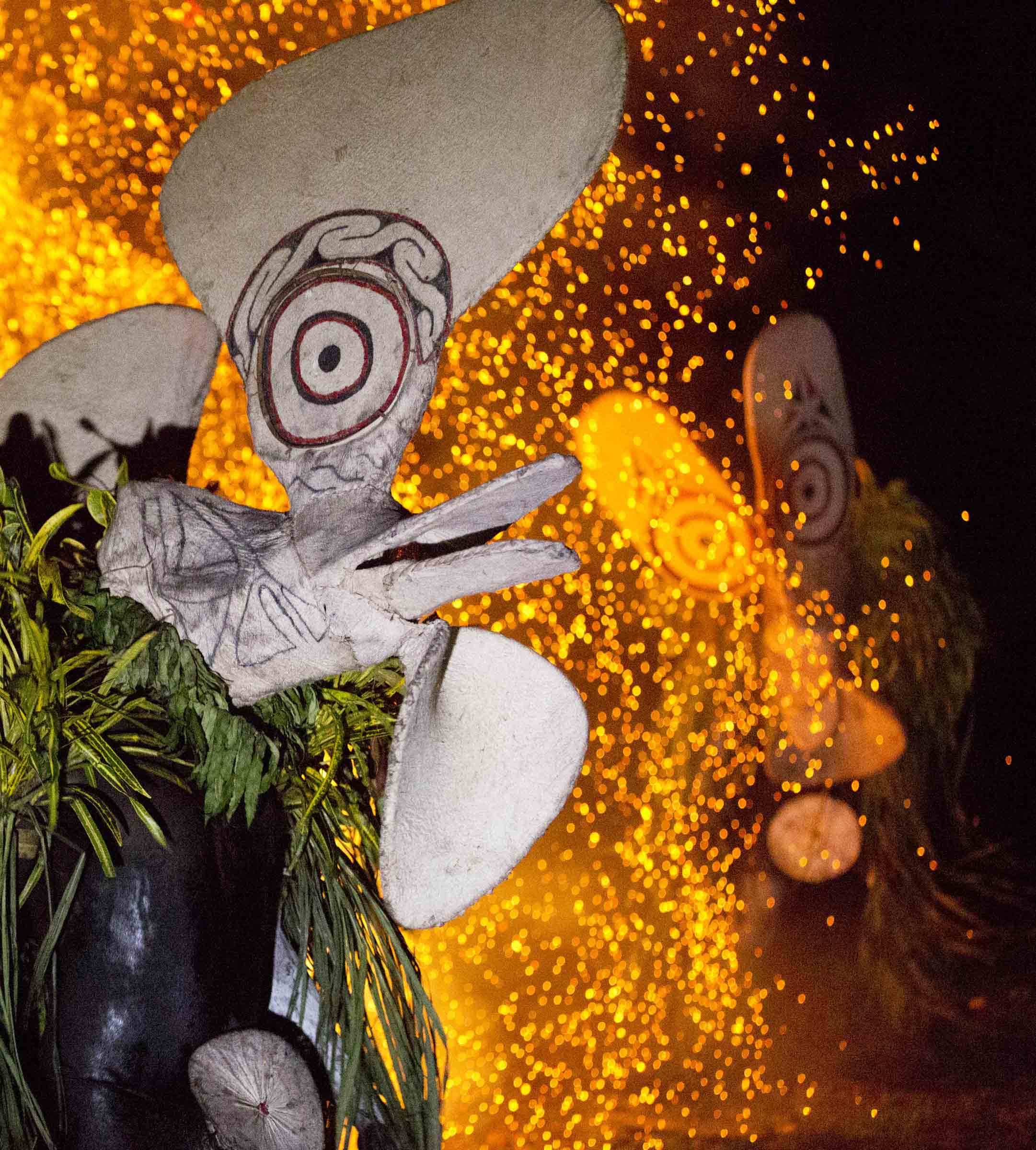
Here I used the flash unit. The masks were a type of tapa cloth on thin wooden frames.
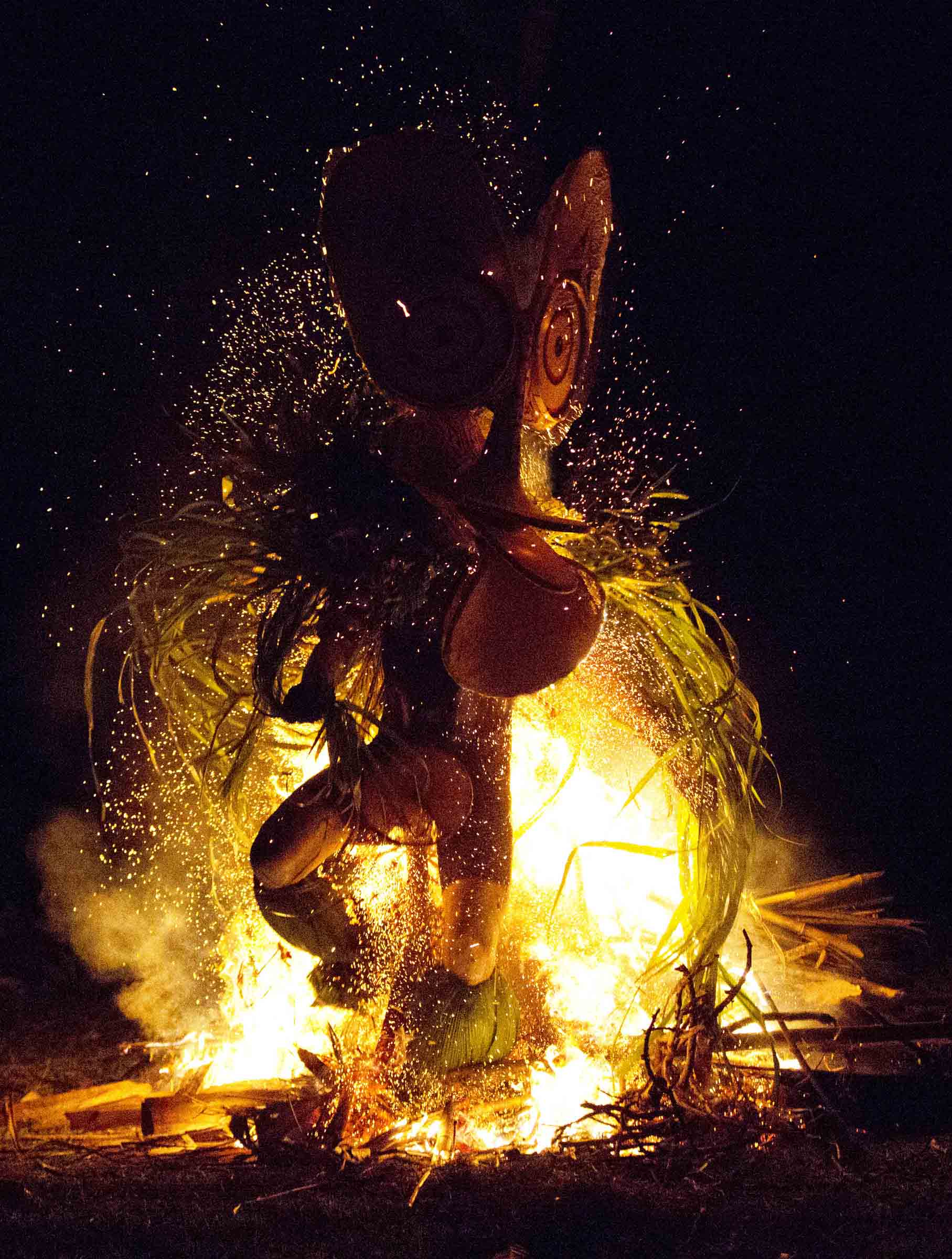
We were given the name of a contact for Buka, and told that we could arrange a vehicle through him for the long drive down the island of Bougainville across the straight. When we left for Bougainville, one of the wildest places on the planet, with no settled arrangements, our hosts might have thought we were nuts, but I also think they were slightly in awe. This is the kind of thing we could do after years of experience. Luckily, Diana sat next to someone important from Buka on the flight. He resembled Duane Johnson, "The Rock," from the movies and said he had heard that before. Luckily, because the contact I had been given turned out not to be there and his vehicles were not available. Our new friend showed us where to stay, visited us there, invited us to his home, and arranged a meeting for us with a minister to discuss our search for the coelacanth. All very fortunate. Our friend told us how they would play football on the airstrip between the once a day flights.
Heavy rain once a day. Buka had been the administrative headquarters during colonial days, in other words, it had a history. I got the impression that once across the straight on the main island of Bougainville all bets were off. There had been an horrendous civil war down there surrounding the operation and collapse of the Rio Tinto Copper mine.

The channel separating Buka from Bougainville Island.
Eventually, I arranged a 4x4 owned by the small hotel we were staying at. The son of the owner would drive us. We were ferried across the straight where we met up with the Toyata Land Cruiser, and our driver, a young man who wore a baseball cap backwards. We were aiming for the town of Arawa far down on the west coast. That would be a base for a drive to the fishmarket at Buin. The beginning of the drive passed mile after mile of former palm oil plantations. Then it edged along a spectacular coast. Rivers cut through to the coast from mountainous highlands with rainforests smothered by vines. I hadn't seen anything quite like this before.
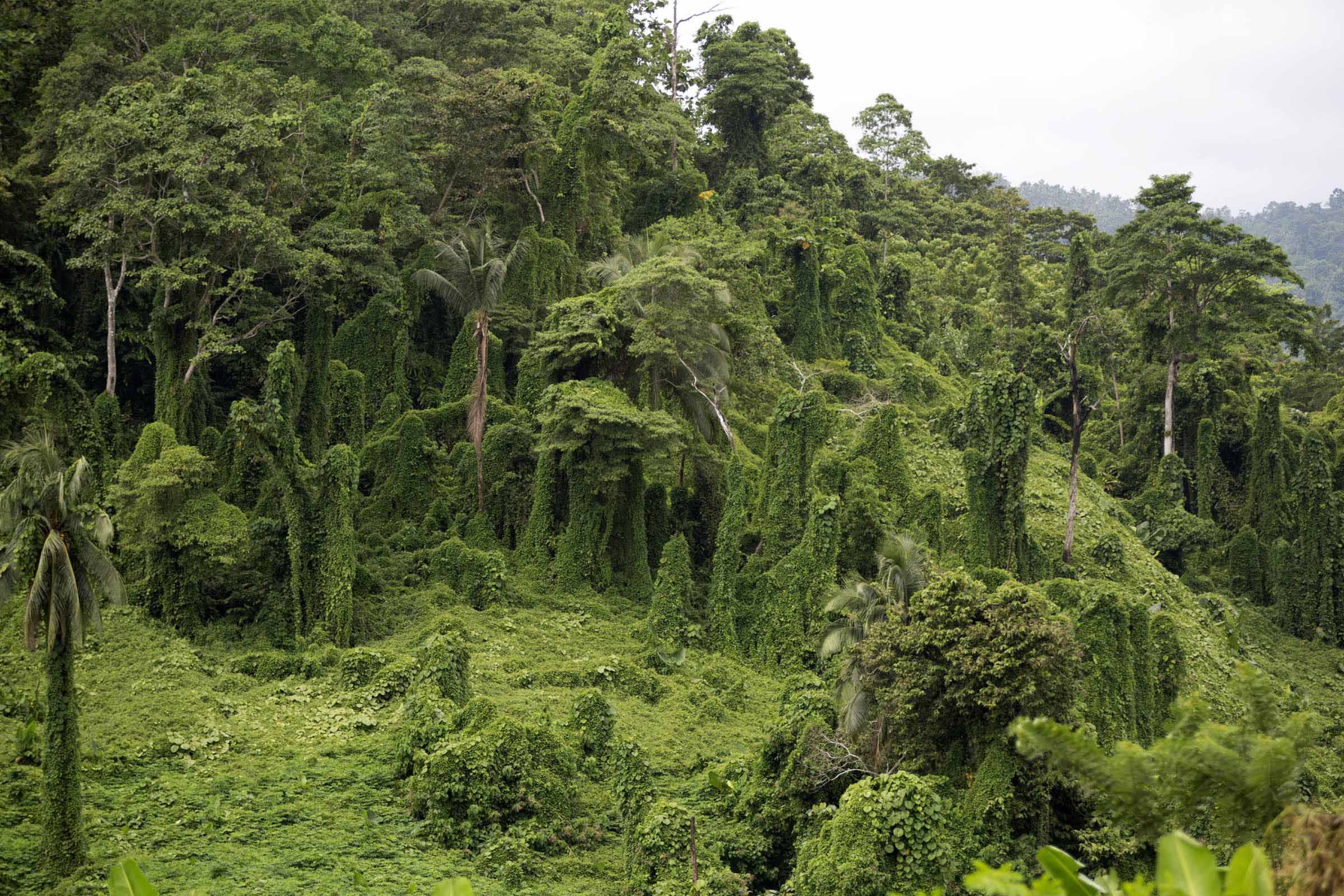 Smothered forests of Bougainville
Smothered forests of Bougainville
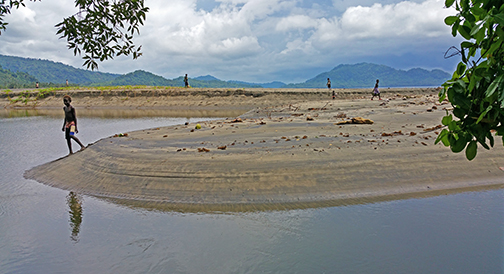
Sandbar looking in from the coast.
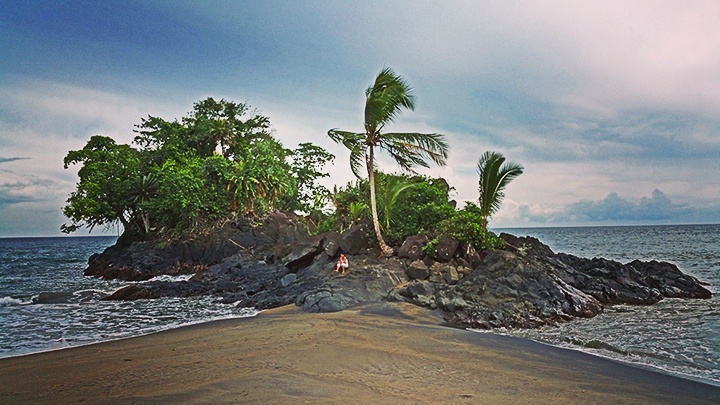
Wild beach near Arawa
After several hours we reached Arawa, pulled into the one hotel, and then things got weird. The judge from Buka was making his rounds of the main island with his security entourage, and was staying at the same hotel in Arawa. When we pulled in, someone in his security entourage recognized our driver. Our driver then drove off to stay with friends down the road. He was arrested overnight by the security team- wanted for armed robbery in Buka. That was startling enough, but also meant we would have to arrange other rides. Meanwhile, the owner of the hotel, a local VIP and his wife who did work for UN women's programs took a liking to us. (He was impressed by my Samsung Note 4). The owner, had been a leader in the civil war on the Bougainville side as they fought the PNG regular army. Now he had several business enterprises of which the hotel was just one. He took us on a personal tour of the remains of the Rio Tinto mine, which basically consisted of scrap metal structures.
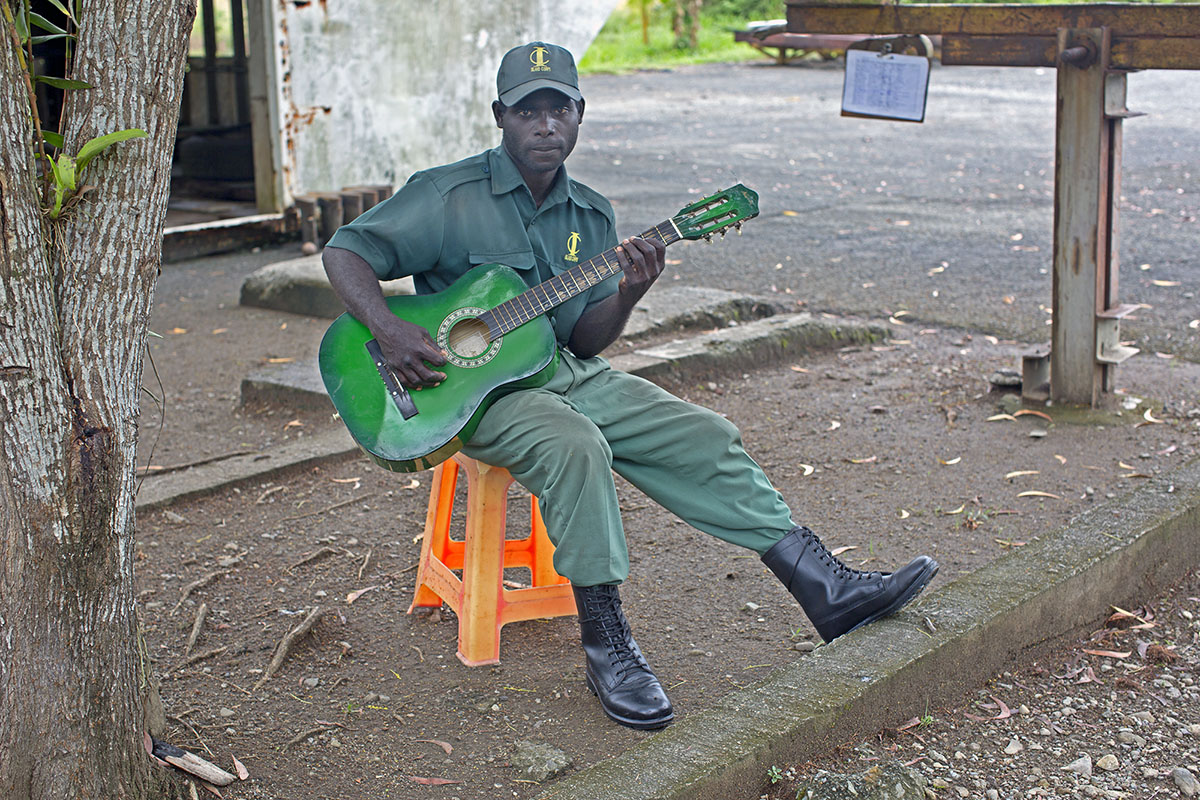
Guard at mine entrance with his green guitar
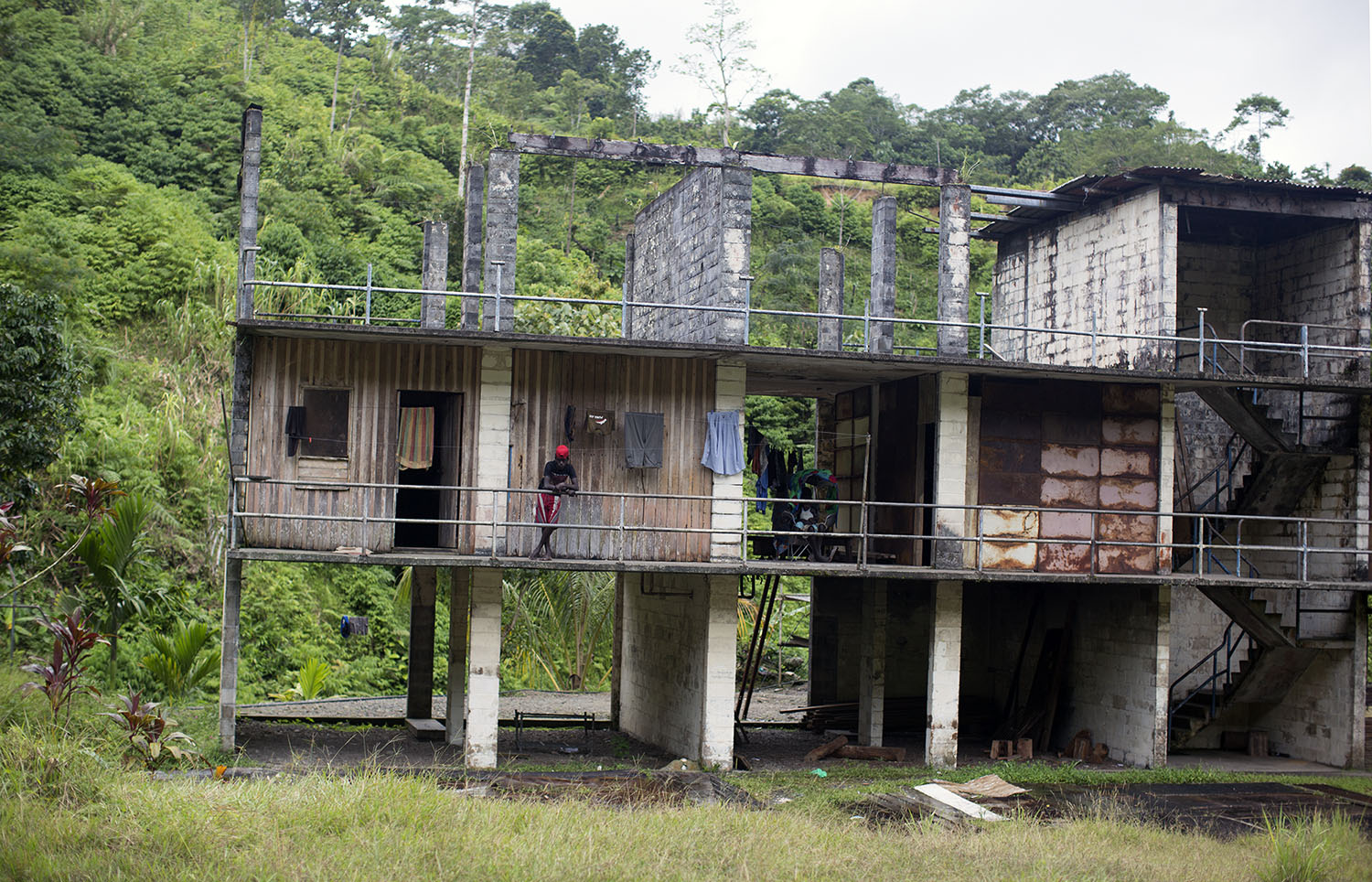
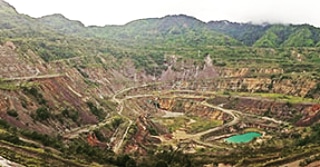
The copper mine processed an entire mountain that rose here.
Essentially what happened was that the mine had become a cash cow for the federal PNG government, and the local Bougainvillians felt they were being ripped off. A resistance developed which moved from sabatage to open warfare. The mine, a sprawling complex of many square miles, was closed down amidst the fighting. Most of the equipment was destroyed, and now there were so many litigations in the World Court, that the chances of getting it going again were seemingly nil in 2015.
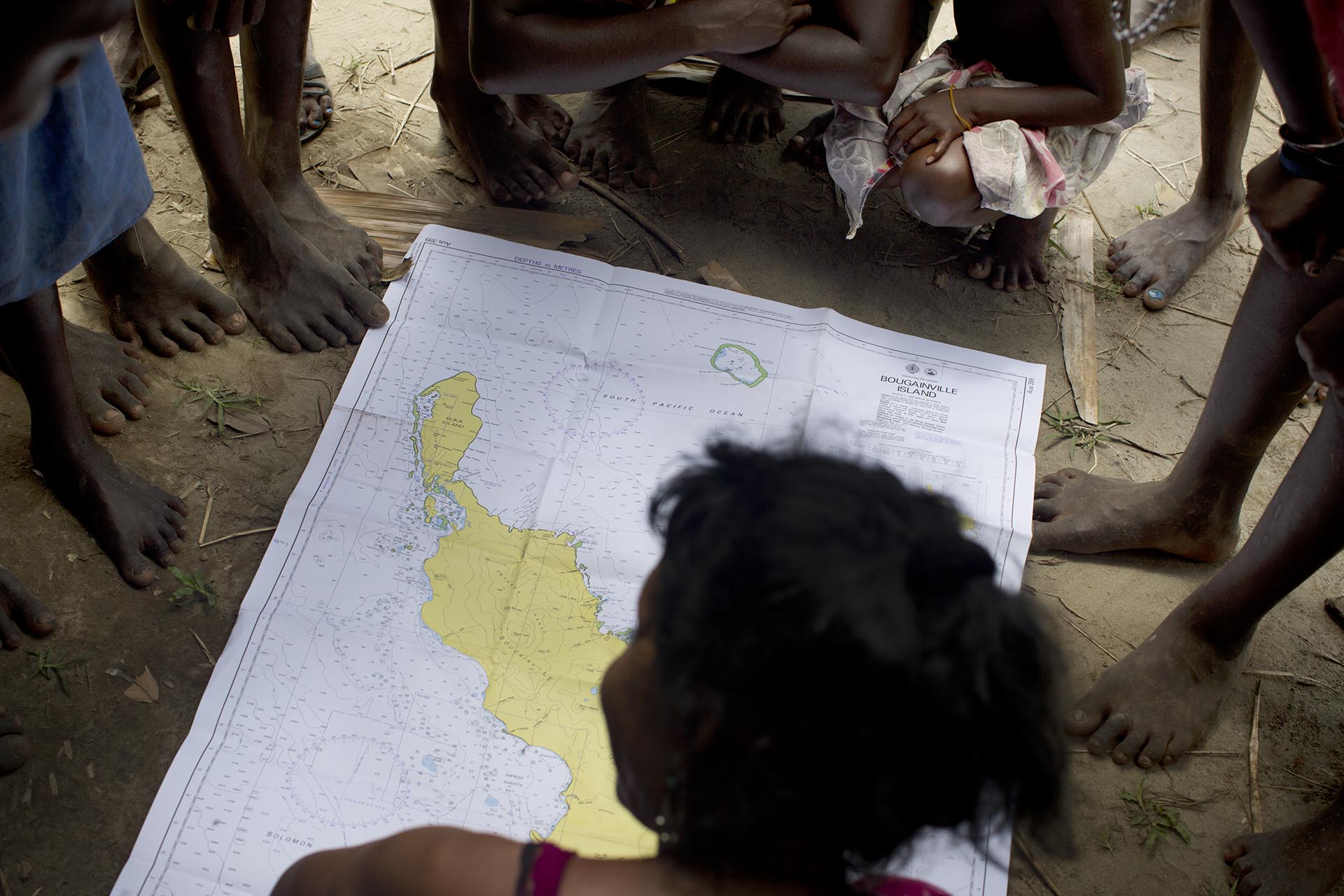
Diana maps out our route.
We arranged a driver to leave at dawn for the drive down to Buin. This was unevenful on a well graded dirt road. Buin had been a Japanese Army base during WWII. Just south of the town is the fish market. We were able to interview several fishermen and groups at the market. To my disappointment, none of them recognized the coelacanth, and some were visiting from the Solomons. The fish being sold were mostly smoked and dried, not fresh as one usually finds.
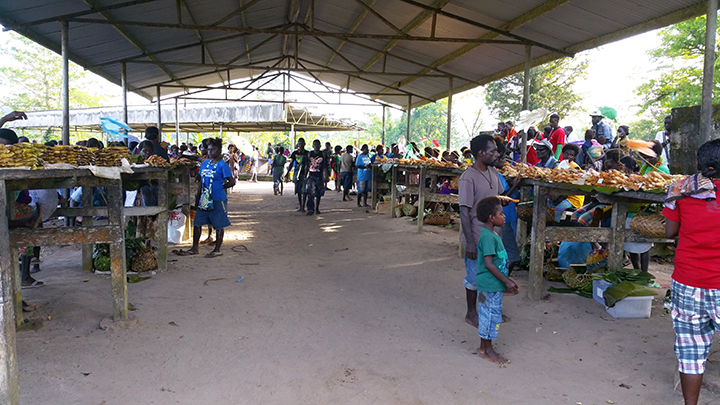
Fish Market at Buin
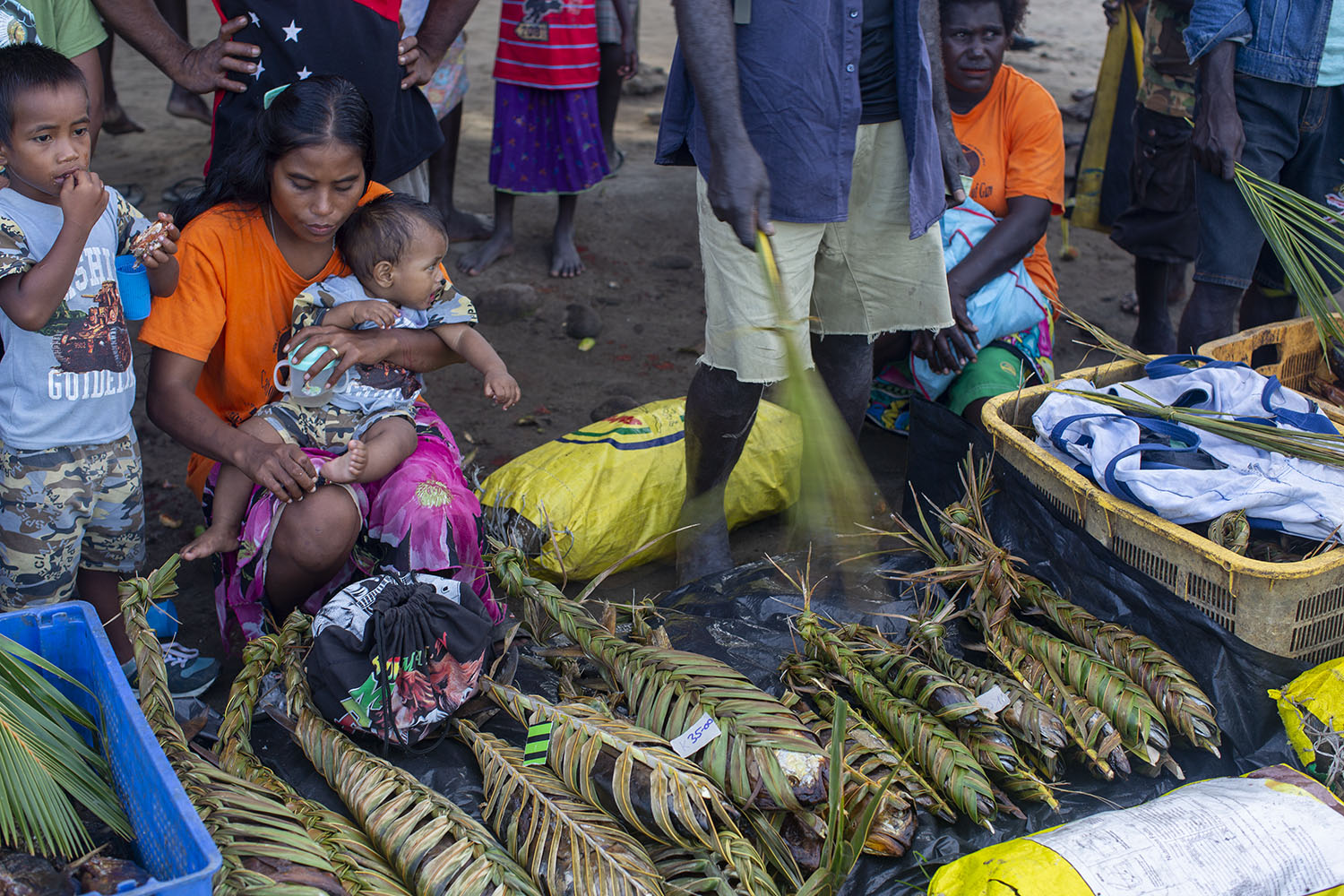
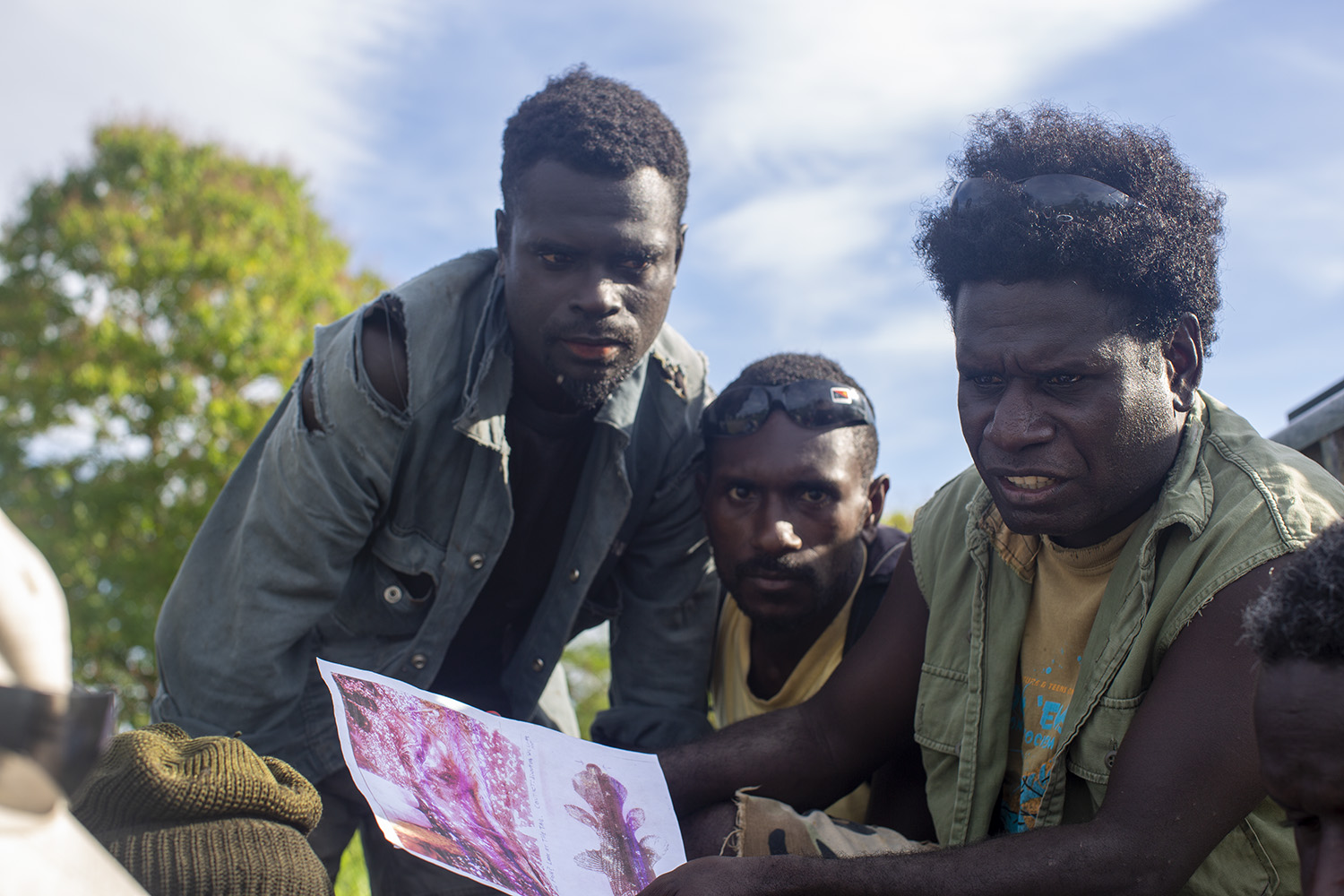
Fishermen study coelacanth I.D. sheets
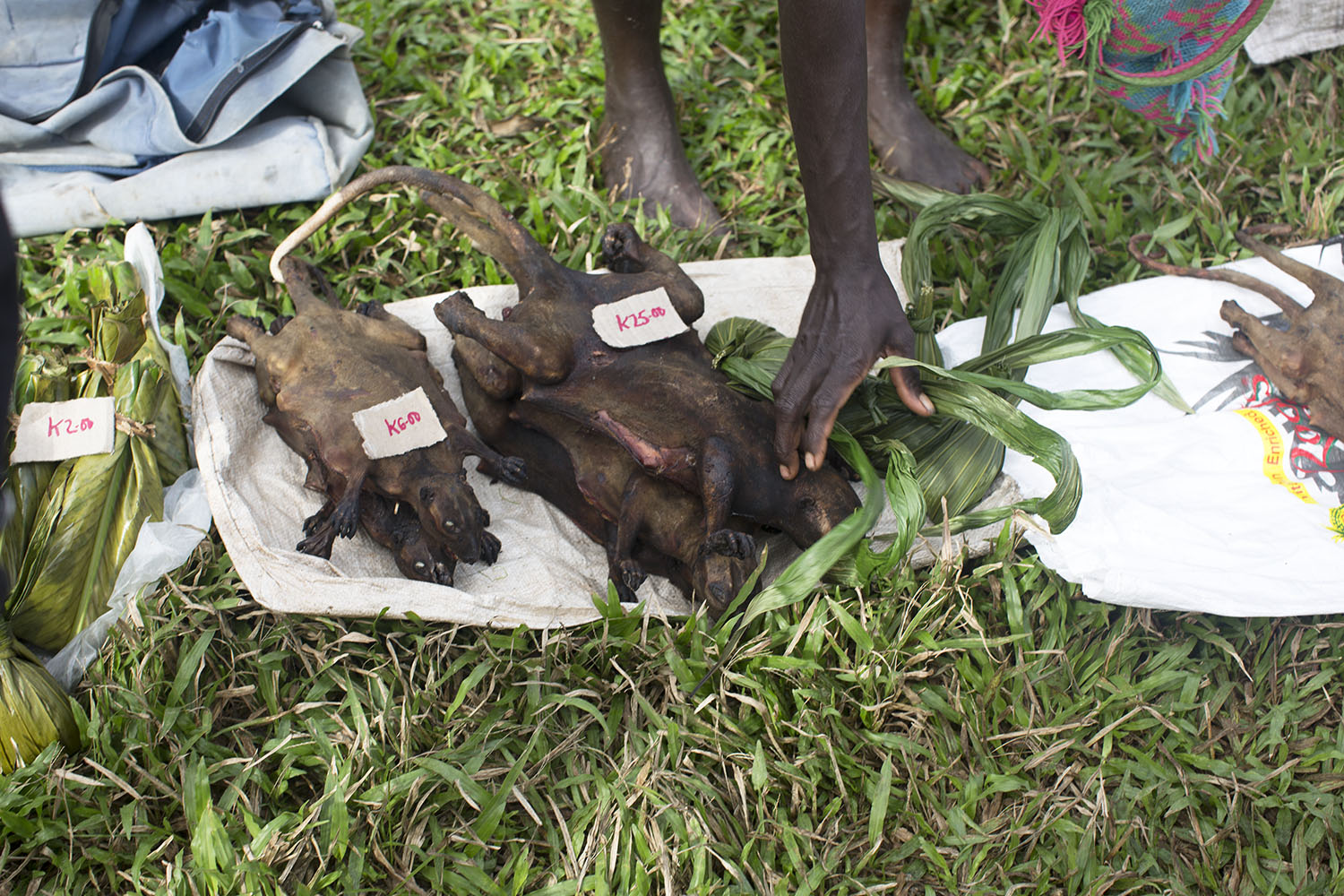
Roasted Opossums at the Buin fish market
I knew that in the vicinity of Buin during WWII, the Betty Bomber carrying Admiral Yamamoto, architecht of Pealr Harbor, had been shot down by a flight of U.S. P-38 Lightings out of Guadalcanal. This was Operation Vengeance, made possible by decoded intercepts of the Admiral's schedule. It was a major set back to Japanese morale and planning. I asked our driver to take us there assuming it was a roadside wreck that was a quick visit. He brought us to a group of roadside huts that it turned out was the starting point for a hike to the wreck. We met local folks who agreed to take us. There was a set fee for the village and landowners that could not be negotiated and an additional hefty fee to take photogaphs. Many of the people around the huts lined up and came with us. So I was a bit cynical from the get go. I soon realized it was a long way into the jungle after crossing a number of cultivated fields in searing heat. But it also seemed that no one had been in there in a least a few years. Our guides had to hack their way through the bannana trees and scrub. We first reached fragments of a wing, and later seperated engines and pieces of fusalage. I was quite amazed. There were no human remains. Within a day Japanese Army forces had removed Yamamoto. Not knowing that the cockpit had been removed to Japan decades before, I mistook window bubble ribbing in a pile of rubble as the cockpit- it was from the tail gun bubble. The cell phone video I later uploaded to youtube received more than a million views with endless comments of my not knowing one end of a plane from the other (!) and criticism of my cynical comments about the well paid locals who seemed to be cleaning the fragments of fusalage in preparation for takeoff ! However, other remarks were historically interesting. I had no idea our visit would be so rare. (Two books about Operation Vengance were published by historians in 2020, one using my panarama picture below:

Back in Arawa there were problems getting north. One driver fell through, then suddenly our original vehicle was available again with a new driver, who it would later turn out was wanted for murder. Back in Buka we wound up in the Police chief's office over a billing dispute on the vehicle rental, moments before our flght out to Rabaul. Resolved with moments to spare we made the flight.
We left PNG via Solomons which was always a good route out. Again we flew up to Upei in the Marovo Lagoon, and again I distributed coelacanth info and checked for any developments since our last visit two years earlier. Nothing new.
Our next "excursion" would be something completely different.
